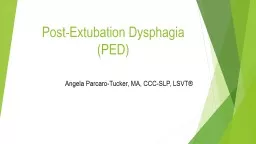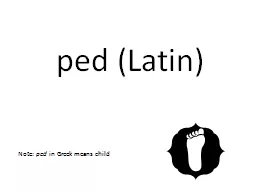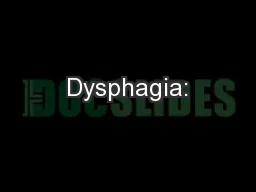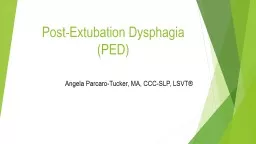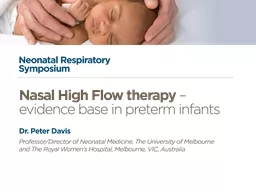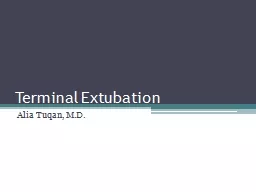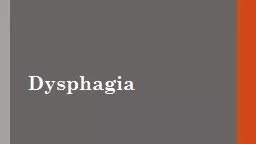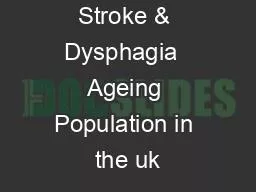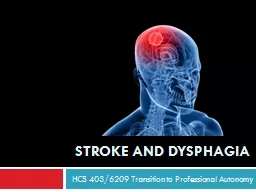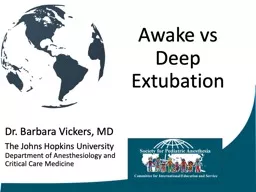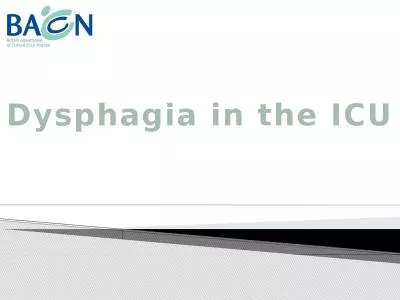PPT-Post- Extubation Dysphagia (PED)
Author : tatyana-admore | Published Date : 2018-02-04
Angela Parcaro Tucker MA CCCSLP LSVT Disclosure I have no proprietary interest in any products or methods mentioned neither I nor members of my family have any
Presentation Embed Code
Download Presentation
Download Presentation The PPT/PDF document "Post- Extubation Dysphagia (PED)" is the property of its rightful owner. Permission is granted to download and print the materials on this website for personal, non-commercial use only, and to display it on your personal computer provided you do not modify the materials and that you retain all copyright notices contained in the materials. By downloading content from our website, you accept the terms of this agreement.
Post- Extubation Dysphagia (PED): Transcript
Download Rules Of Document
"Post- Extubation Dysphagia (PED)"The content belongs to its owner. You may download and print it for personal use, without modification, and keep all copyright notices. By downloading, you agree to these terms.
Related Documents

